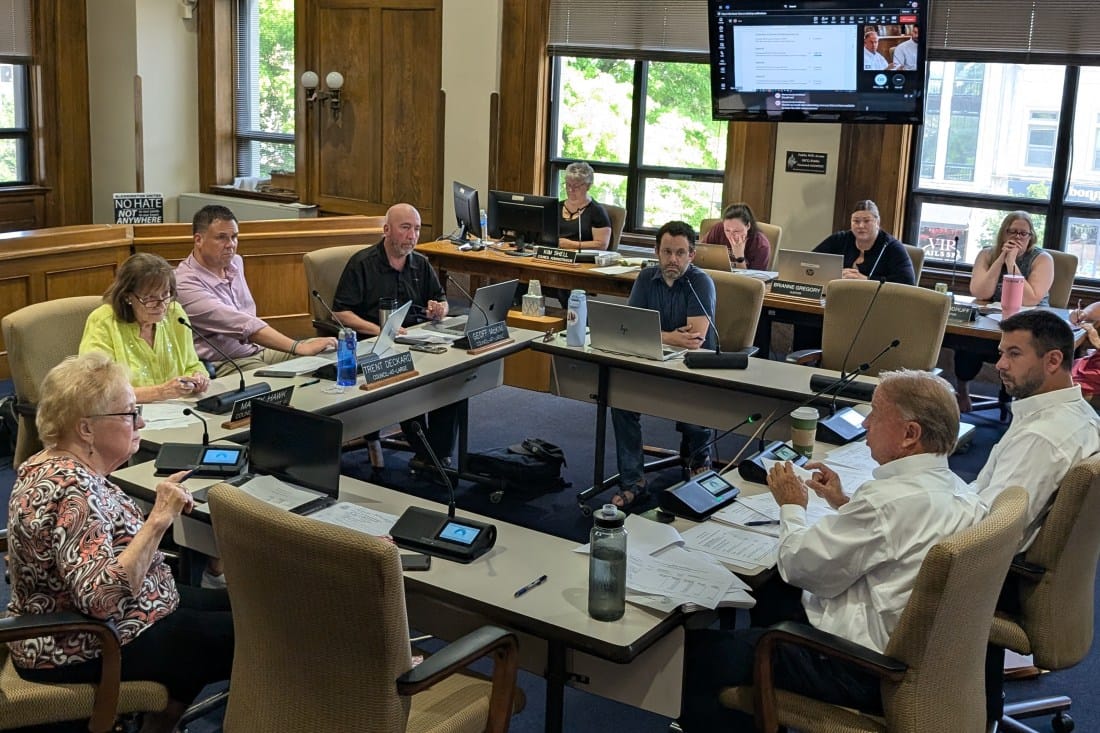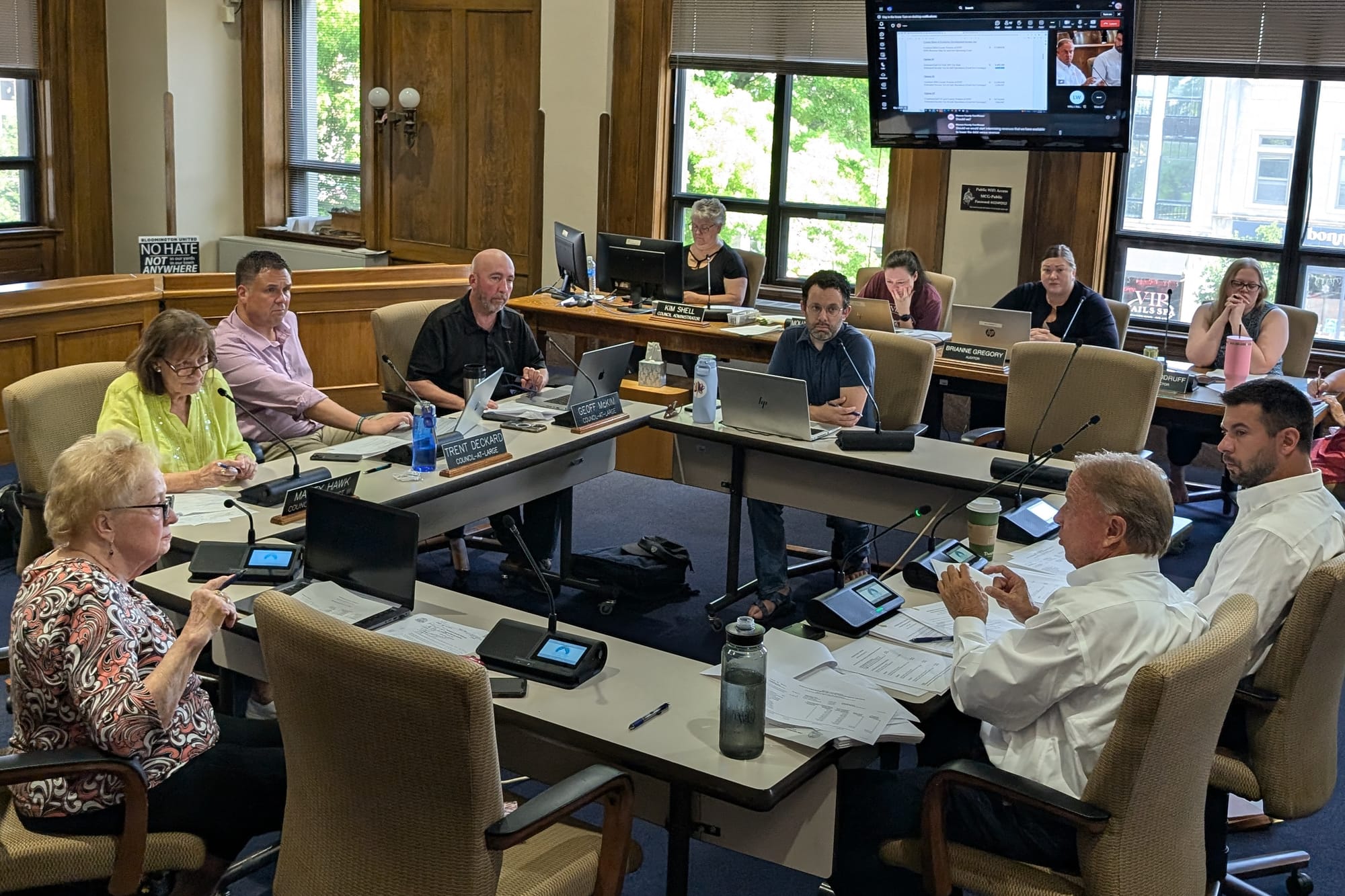New jail notebook: 0.2% tax advised by Monroe County consultant would generate $8.5M a year


This year, Monroe County should enact a corrections local income tax (LIT) at the full 0.2 percent rate that’s allowed by state law, according to Greg Guerrettaz with Financial Services Group (FSG).
Guerrettaz was speaking at a Friday morning meeting of the Monroe County council’s long-term finance planning committee. FSG is the county’s financial planning consultant.
The additional jail income tax would have an impact on all residents of the county. A household with a taxable income of $60,000 would pay $120 a year due to the jail tax. [Listen to this report]
All but 0.01 points of the 0.2 percent corrections LIT would be a new tax. Last year, the county council enacted the corrections LIT for the first time at a 0.01 rate, which means that under current state law, that kind of tax can be collected for only another 24 years.
The total annual revenue that would be generated by a 0.2-percent jail LIT is estimated by FSG at around $8,485,200.
The $8.5 million figure, which would not be affected by the outcome of the city of Bloomington’s annexation litigation, would be enough to fund a construction budget of $85,925,000, based on issuance of 20-year bonds, at an interest rate of 5 percent, according to FSG.
That would fall short of the total cost of a fully co-located new facility that has been pegged at around $142-152 million by DLZ, which is the county’s consultant for master planning and designing a new jail facility. That’s based on $70-75 million for a justice center and $72-77 million for the jail and sheriff’s office.
But if Monroe County government adds the roughly $11.2 million that it now receives from the relatively new economic development LIT, enacted by Bloomington’s city council in May 2022, that would bring a possible construction budget to about $211 million. Annexation would have an impact on economic development LIT revenue to the county, because the economic development LIT is distributed to local units based on their population.
If the term of the bonds were stretched to 25 years instead of 20 years, that could make for a construction budget of $228,775,000. But that’s a scenario that Guerrettaz advised against in his remarks at Friday’s committee meeting. He said it would “hurt too much,” calling it “very expensive.”
During the committee meeting, councilor Cheryl Munson noted that Duke Energy’s planned increase in electricity rates would be an impact faced by taxpayers, in addition to any jail tax the county might impose. Duke’s own analysis of its proposed rate increase works out to about a $330 annual increase for a typical customer.
After the committee meeting, county council president Trent Deckard responded to a B Square question about the idea that FSG’s analysis shows that the county could afford to build a co-located facility. Deckard said that while that’s a conclusion that officials inside the courthouse might reach, residents walking around outside might not see it that way.
During the committee meeting, Deckard’s focus was on the taxpayer’s perspective. He said, “Our job is to determine how we will pay for this and do that representing the taxpayers to the best of our ability.”
Deckard said that anything that can be done to reduce costs by even a penny should be considered. Even if it is legal to impose a tax, Deckard said, “There is a cost to doing those things faced by taxpayers.”
Deckard also noted that the cost of the new jail would depend on the bed count. County commissioners have recently taken the view that it should be the county council that decides the bed count, which has led to some friction between the council and the commissioners.
The two separate funding streams—jail LIT and economic development LIT—are suggestive for some councilors of a two-phase construction. For councilor Geoff McKim, the idea of phasing the construction so that the jail gets built first, and the justice complex after that, means the Thomson PUD property should be back in the mix.
The deal-breaker for using the Thomson property had been a two-year delay to move Duke Energy power lines. McKim said it would be worth considering if the jail could be built at a place on the property that would not require relocation of the power lines. That way, construction of the jail could start, while the construction of the justice complex waits until the power lines are moved.
The discussions up to now about the choice of a new jail location have included an assumption that it will be the county commissioners who decide the location. But under state law, the county council also has to approve the purchase of any new property.
The county council’s timeline for a decision on enacting a 0.2-percent jail LIT includes a requirement that other jurisdictions be notified by August 1.




Comments ()